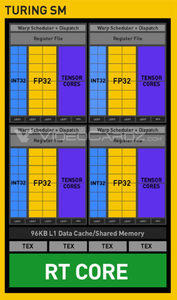happymedium
Gawd
- Joined
- Dec 23, 2010
- Messages
- 886
Please watch and learn.
https://www.techspot.com/article/1785-nvidia-geforce-rtx-2060-vram-enough/
Quote"
"
Bottom Line
It's clear that right now, even for 4K gaming, 6GB of VRAM really is enough. Of course, the RTX 2060 isn’t powerful enough to game at 4K, at least using maximum quality settings, but that’s not really the point. I can hear the roars already, this isn't about gaming today, it’s about gaming tomorrow. Like a much later tomorrow…
The argument is something like, yeah the RTX 2060 is okay now, but for future games it just won’t have enough VRAM. And while we don’t have a functioning crystal ball, we know this is going to be both true, and not so true. At some point games are absolutely going to require more than 6GB of VRAM for best visuals.
The question is, by the time that happens will the RTX 2060 be powerful enough to provide playable performance using those settings? It’s almost certainly not going to be an issue this year and I doubt it will be a real problem next year. Maybe in 3 years, you might have to start managing some quality settings then, 4 years probably, and I would say certainly in 5 years time.
https://www.techspot.com/article/1785-nvidia-geforce-rtx-2060-vram-enough/
Quote"
"
Bottom Line
It's clear that right now, even for 4K gaming, 6GB of VRAM really is enough. Of course, the RTX 2060 isn’t powerful enough to game at 4K, at least using maximum quality settings, but that’s not really the point. I can hear the roars already, this isn't about gaming today, it’s about gaming tomorrow. Like a much later tomorrow…
The argument is something like, yeah the RTX 2060 is okay now, but for future games it just won’t have enough VRAM. And while we don’t have a functioning crystal ball, we know this is going to be both true, and not so true. At some point games are absolutely going to require more than 6GB of VRAM for best visuals.
The question is, by the time that happens will the RTX 2060 be powerful enough to provide playable performance using those settings? It’s almost certainly not going to be an issue this year and I doubt it will be a real problem next year. Maybe in 3 years, you might have to start managing some quality settings then, 4 years probably, and I would say certainly in 5 years time.
Last edited:
![[H]ard|Forum](/styles/hardforum/xenforo/logo_dark.png)
